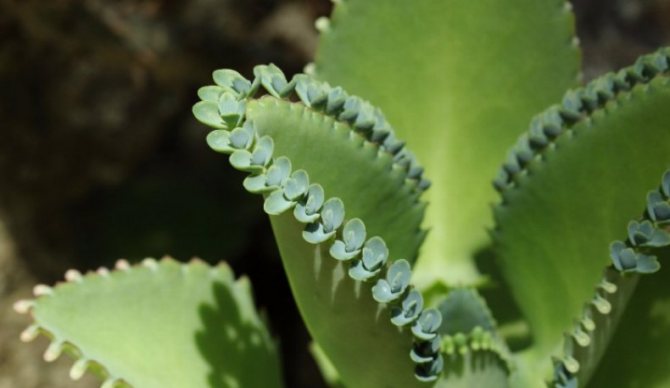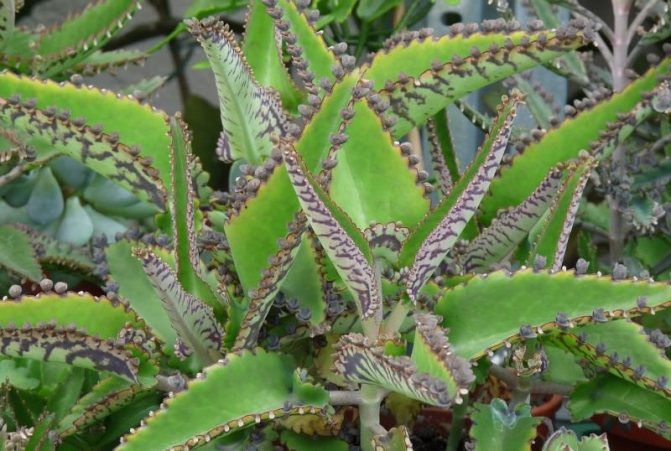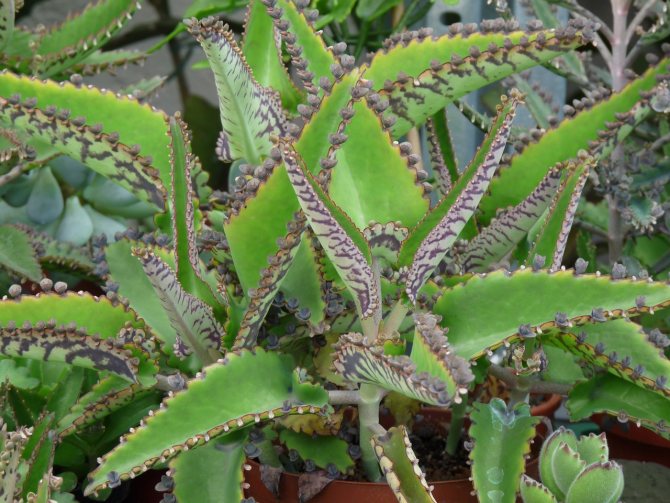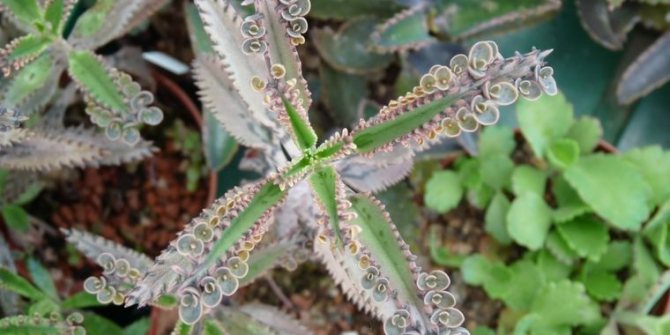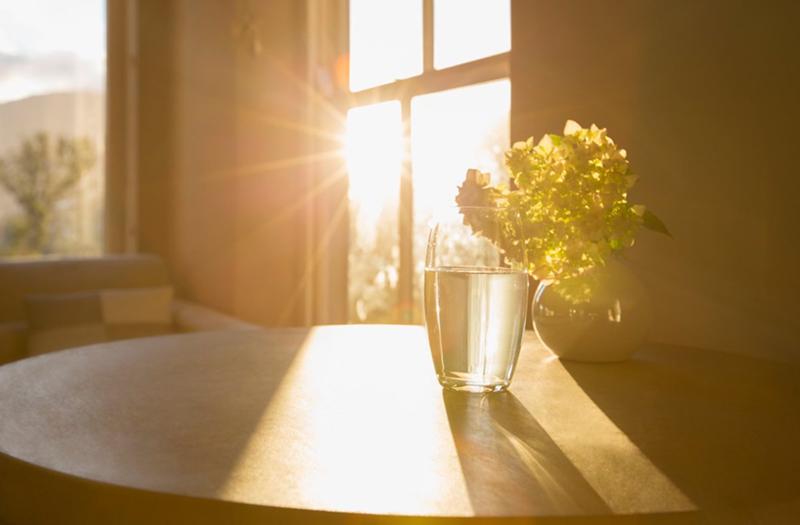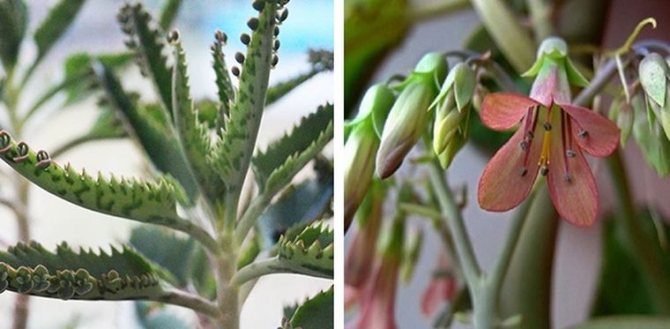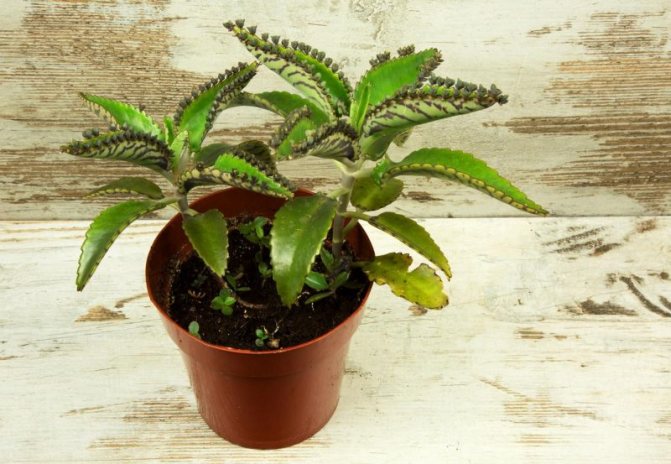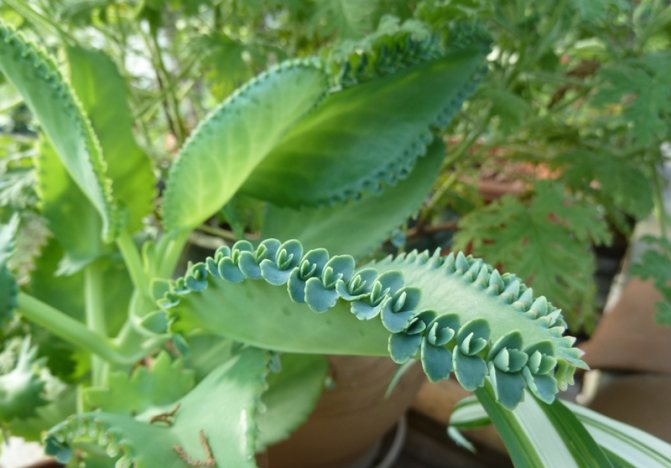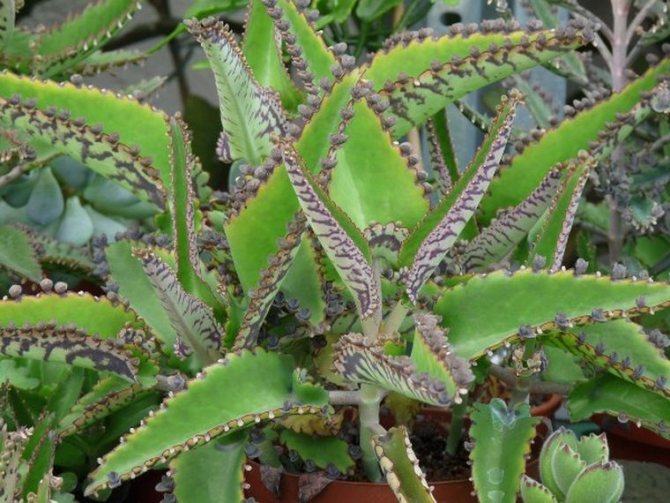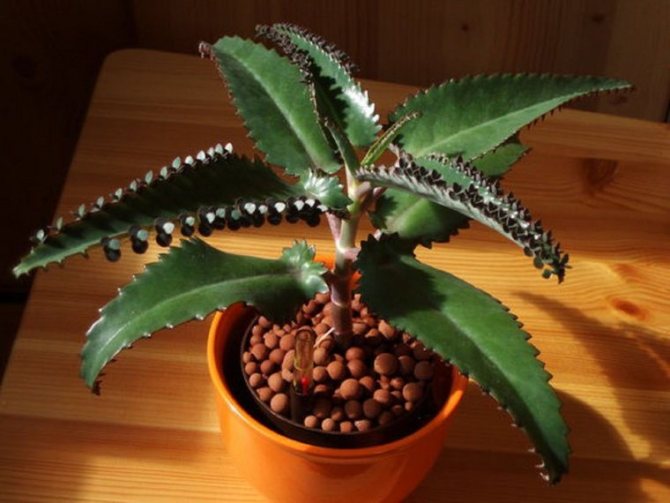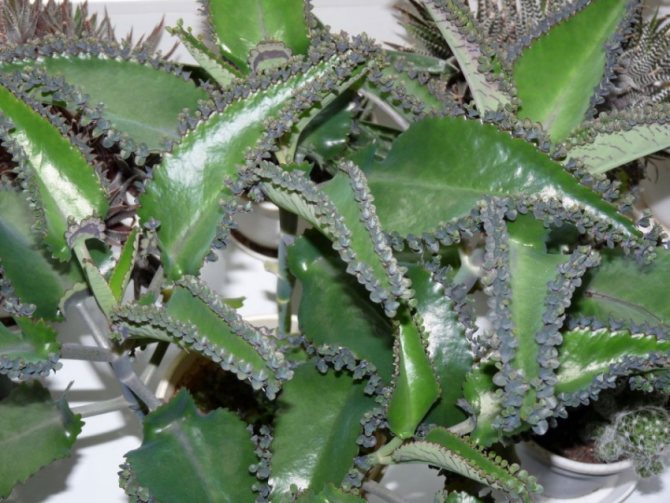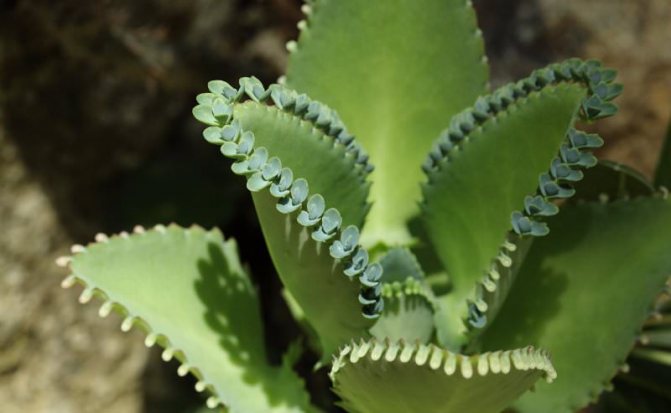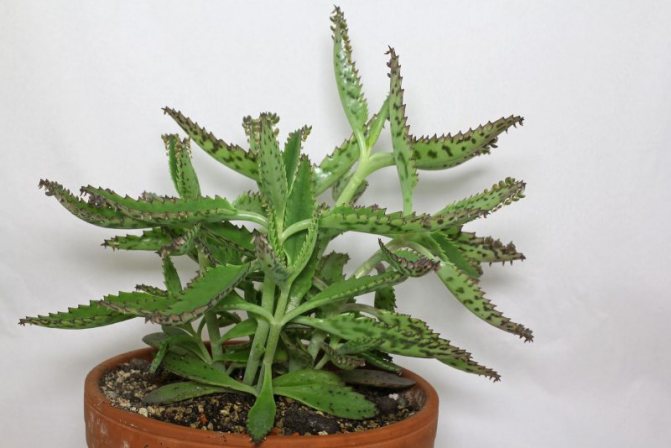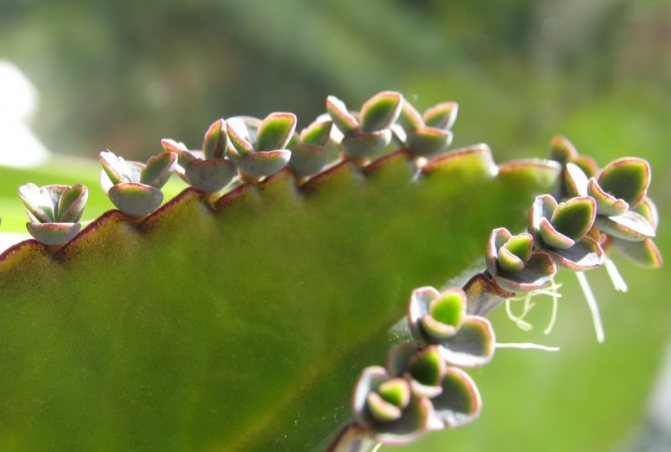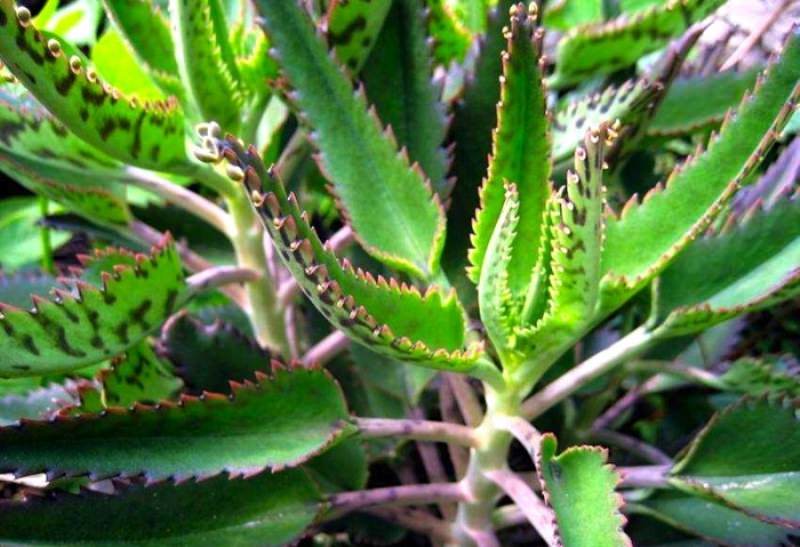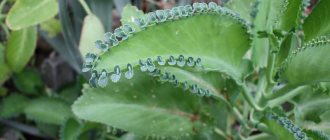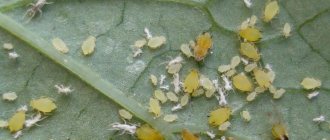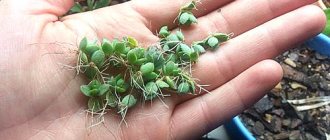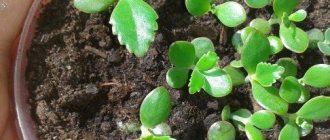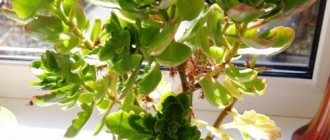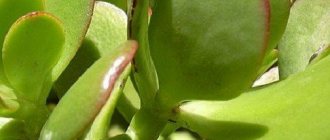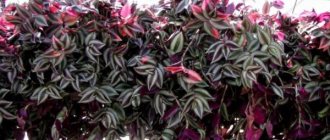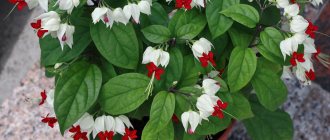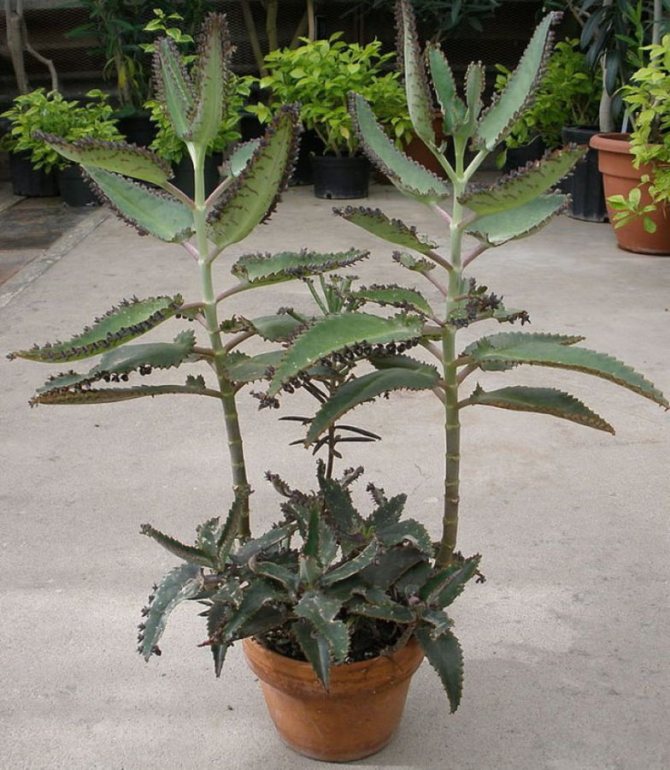
If Kalanchle Blossfeld is famous for its gorgeous flowering, then Degremona is in the lead in the list of indoor medicinal plants. Kalanchoe Degremona, home care for which is simple and uncomplicated, in itself is not particularly decorative. The plant cannot boast of either a lush dense bush or a colorful flowering. But in the glossy leaves there is great healing power. A flower growing in a room already "works" for its owner, cleansing the room and "charging" the inhabitants of the house with cheerfulness.
Kalanchoe Degremona - what it looks like
The herbaceous succulent Kalanchoe daigremontiana belongs to the genus Kalanchoe (lat.Kalanchoe) and the family Crassulaceae (lat.Crassulaceae). The plant has a straight stem without branches with an average height of 60-100 cm. The leaves are triangular in shape with a shiny surface, painted green, sometimes with a reddish border along the edge.
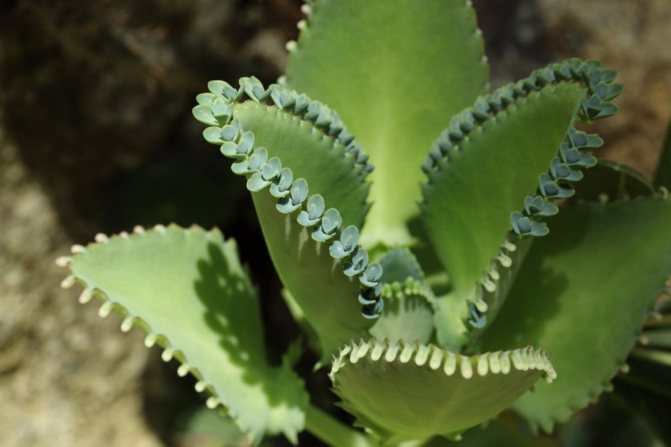

Kalanchoe Degremona
The leaf plate has a serrated edge, bent inward, daughter plants grow on each of its cloves - brood buds, which are called "children". Each such bud already has roots, therefore, falling to the ground, it quickly takes root.
Kalanchoe Degremona is from Madagascar. The feathery look is related to him, but it is easy to distinguish them from each other, since children are a characteristic feature of only Degremon.
Attention! During the flowering period, it is impossible to collect plant sap for medicinal purposes, as it becomes poisonous. This is another surefire way to distinguish it from feathery.
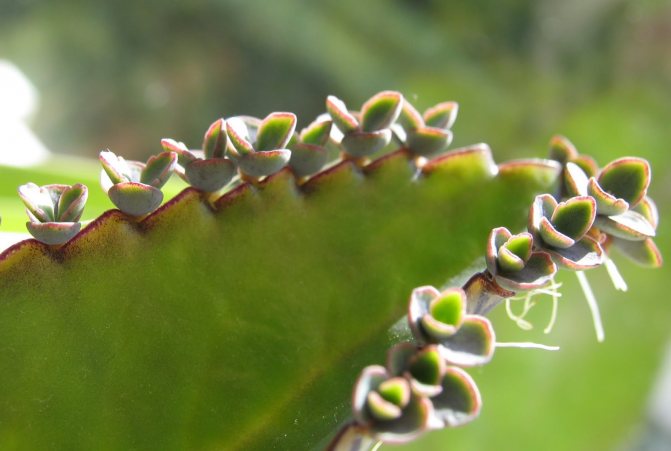

Brood buds along the edge of the Kalanchoe Degremona leaf
Briefly about the history of appearance, medicinal properties
The plant was first described by the German gardener and botanist Alvin Berger in 1914. The Kalanchoe became widespread in Europe since 1925, and a little later was introduced to the USSR. The healing succulent plant gained immense popularity and soon settled on almost every windowsill in the country.
The medicinal properties of the plant are very numerous:
- anti-inflammatory;
- hemostatic;
- wound healing;
- antiallergic;
- bactericidal;
- immunomodulatory.
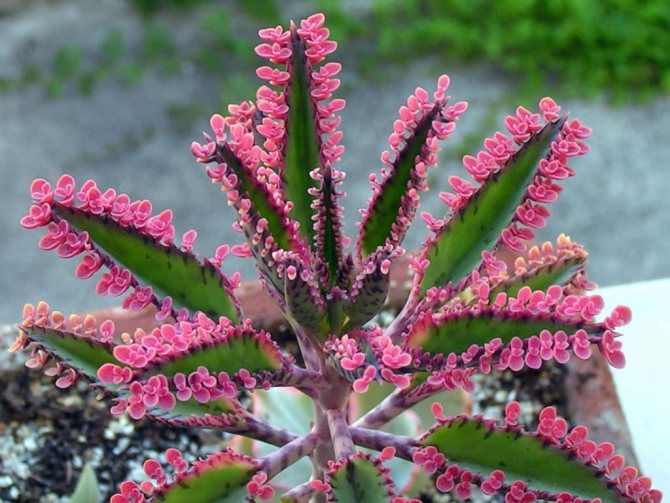

Kalanchoe Degremona with pink "children"
The medicinal effect is exerted not only by the plant sap, which has received official recognition in medicine. In Kalanchoe pinnate and Degremon, the differences in terms of healing are not so great. In the house where the pot of Kalanchoe is located, the air is cleared of pathogenic microflora.
Healing properties
Kalanchoe Degremona has not only decorative qualities, but also medicinal properties.
If a Kalanchoe Cirrus has been known for its healing properties for a long time, then they started talking about Degremon quite recently.
Freshly squeezed juice from the leaves of the culture Is an effective and harmless medicine not only for adults, but also for children, and chewing the leaves of this miraculous flower will help save you from tonsillitis.
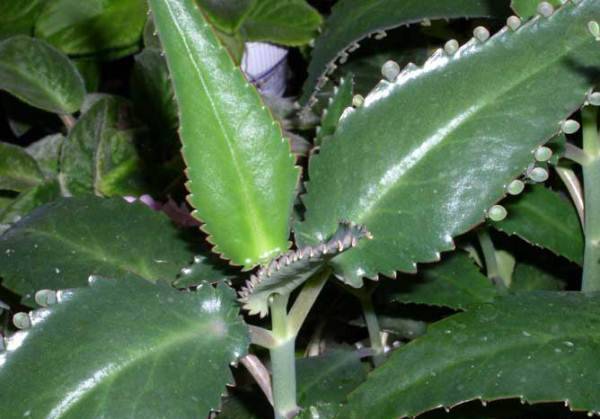

Kalanchoe Degremona is famous for its analgesic effect, it is effective for ulcerative pain, tuberculosis, wounds and ulcers
The most commonly used juice from the leaves. To prepare it, you will need to chop the leaves and squeeze the juice from them.... This juice will keep for about a week. To make it last longer, it can be sterilized.
For what diseases is it useful and effective to use the juice from Degremona leaves?
- In the presence of bedsores and fistulas;
- When trophic ulcers shins;
- As a therapeutic agent with purulent processes;
- When itchy gums, as well as with bleeding gums;
- When dermatitis.
Moreover, Degremona juice has healing and anti-inflammatory properties.
Also has healing properties and tincture of Degremona juice on water... To prepare an aqueous tincture, you will need to take one part of juice for five parts of water.
Such a tincture will help cleanse wounds from necrotic tissue, remove pus, and also speed up healing. It is also used to rinse the mouth for diseases of the gums and throat.
Kalanchoe Degremona - home care
Kalanchoe blooming: home care and reasons why it does not bloom
A very tenacious succulent survives even when the owners remember it only occasionally. But with proper care, the appearance of its crown will be distinguished by its beauty and splendor.
Illumination and temperature conditions
A light-loving plant can grow in partial shade, but prefers sunny southern and southeastern windows. The optimal daylight hours are 10-12 hours. At the height of summer, it is worth leaving the pot on the east or west window to avoid burns on the leaves, but in winter only the south window will do, or additional lighting will be required.
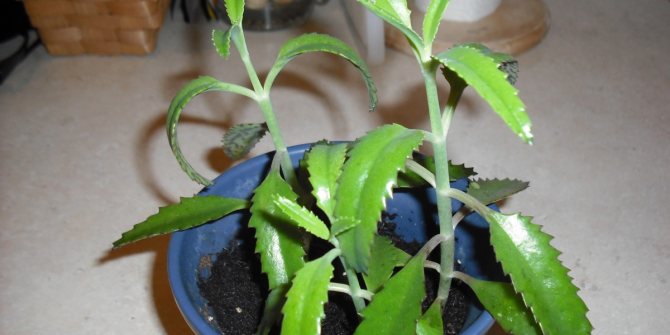

With a lack of light, the stems are strongly stretched
Watering rules and humidity
Kalanchoe Degremona feels great in the dry air of apartments, he does not need spraying at all. Moisture accumulates in the foliage and stems, which the succulent spends very sparingly for its needs.
Staying in completely dry soil does not lead to the death of the flower, it will rather die in flooded soil, in which its roots will quickly begin to rot. Kalanchoe is watered only after the soil dries up to a third of the height of the pot.
For reference! For 3 winter months, you need to water no more than 2 times.
Top dressing and soil quality
The optimal composition of the soil mixture for planting Kalanchoe:
- 1 part sand;
- 2 parts compost;
- 2 parts of leafy soil.
For the best friability, additional crushed charcoal and vermiculite can be added. Top dressing will be required no more than 2-3 times per season and only in the warm season.
For reference! For fertilization, Degremona use liquid complex fertilizers for succulents in a minimum concentration.
Flower container size
The pot is selected according to the size of the root system. It is superficial in the succulent, so deep containers are not used. Preference is given to ceramic low and wide pots, which have good stability.
Transplant features
Since the root system of Kalanche Degremon grows rapidly, the plant needs frequent transplants for normal growth and development. For young flowers (up to 5 years old), work is carried out annually, and adult specimens must be transferred to a new pot once every 2-3 years.
It is imperative to transplant Kalanchoe in the spring, since during this period the plant adapts as quickly as possible to new conditions and takes root well. You need to be guided by the following rules:
- Pull the plant out of the pot carefully, being careful not to damage the fragile roots;
- In order for the root system to separate well, the walls of the pot can be moistened with water;
- It is better not to shake the earth from the roots - transplant the plant along with part of the old soil;
- There must be holes at the bottom of the pot to drain excess moisture and a drainage layer.
The transplantation scheme itself is quite simple: a small amount of the prepared substrate is poured onto the drainage layer, then the root system of the plant is placed. All free space is filled with soil, which can be lightly tamped.
Watering the Kalanchoe is carried out immediately during transplantation in order for the substrate to shrink in the pot. If necessary, the soil is filled up, and the plant itself is transferred to a place protected from direct sunlight. The adaptation of Degremon lasts about 1-2 weeks, and during this period the succulent is fully rooted in the pot.
Flowering and dormant period of the plant
Kalanchoe reproduction: options and methods at home
The flowering of Kalanchoe Degremona in its natural environment occurs annually. In indoor conditions, you will have to work hard to get flowers. To do this, within a month, it is necessary to provide the plant with harsh conditions:
- daylight hours for 4-5 hours, for the rest of the time the pot is removed in a dark cabinet or covered with an opaque cap;
- watering and feeding are stopped.
After a month, they continue to look after in the standard mode. This stimulates the succulent to expel the flower stalks. If the Kalanchoe does not want to bloom, then the plant is too young, and the procedure should be repeated after 6-12 months.
Type and shape of flowers
At the end of a long (40-60 cm) peduncle of a reddish hue, a complex brush is formed, consisting of identical drooping buds blooming in the form of pink bells.
The corolla is formed by five fused petals. 8 large red stamens end with large dark brown anthers. The yellow pistil looks like a split panicle. When pollinated, a box with small seeds inside is formed from each bud.
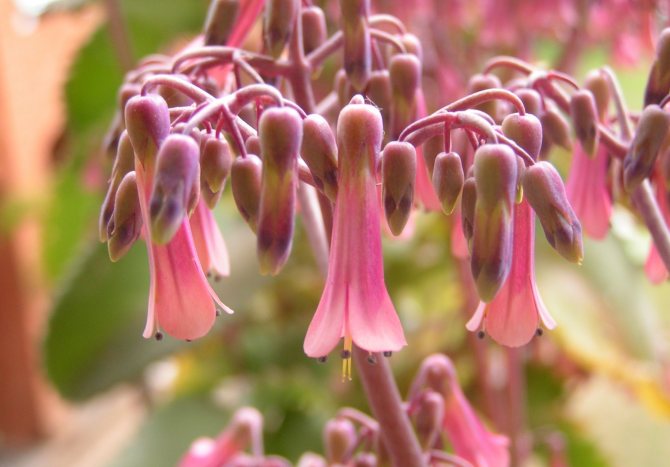

Inflorescence of Kalanchoe Degremon
Reproduction of Kalanchoe Degremon
If a plant of any age is available, then its shoots and brood buds are the best planting material. Only in their absence are they ordered seeds, which can be obtained by mail.
Seeds
The disadvantage of the seed method is the short shelf life of seeds that lose their germination in less than a year. In addition, the seedlings need to create almost sterile conditions (the soil and planting containers must be sterilized).
Sowing is carried out on the soil surface, without deepening. Moisten slightly with a spray bottle and cover with glass or film. Seedlings should be expected for 2-6 weeks.
Young seedlings can be dived at the stage of 3-4 leaves.
Brood buds
The brood bud is a 100% independent plant with its own root system. It is immediately planted in the soil and provided with standard care.
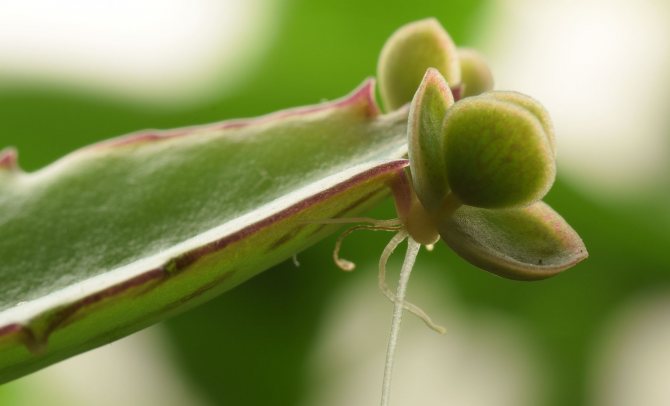

Brood bud close up
Cuttings
The crown cut is the finished cutting. It can be of any size, it will not affect rooting. The stalk is left to dry in the air for 1-2 days, and then immediately planted in the soil.
Until the root system is formed (1.5-2 months), watering is rarely carried out when the soil dries well, otherwise there is a high risk of rot.
Possible problems in growing degremona
The mistake of inexperienced growers is to try to force the succulent to branch. He is not capable of this. If you pinch the top of its head, it will lead to a rapid extinction.
An equally common mistake is the bay. Excess moisture leads to rapid root decay. In such cases, only rejuvenation will help - completely cut off the lower part with the roots, and then root the crown.
Are there diseases and pests
Indoors, succulents are threatened by the following common pests:
- aphid;
- spider mite;
- shield and false shield.
They are treated with acaricides and insecticides ("Aktara", "Iskra-M"). If signs of a fungal disease are detected (brown or black dry or weeping spots on the leaves), it is best to rejuvenate the plant, or treat it with a broad-spectrum fungicide.
Kalanchoe Degremona is a welcome guest in every home. A beautiful and medicinal plant does not cause trouble, but it will always provide the most valuable medicinal raw material for diseases of the eyes, ears, nose, and colds.


